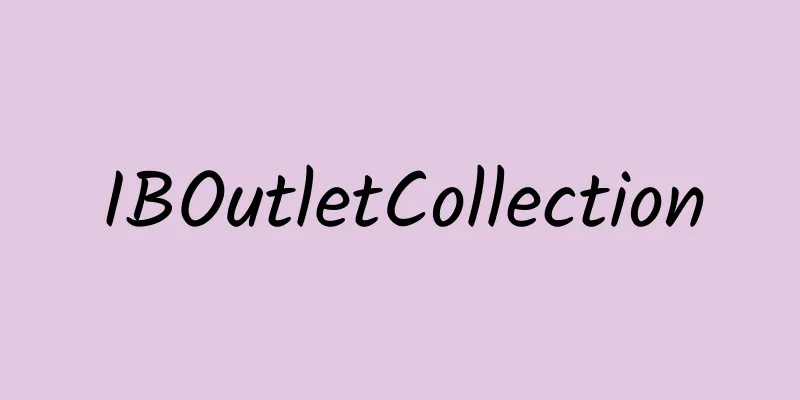IBOutletCollection

|
IBOutletCollection When connecting IB with related files, we often use two keywords: IBOutlet and IBAction. Those who often use xib or storyboard should be very familiar with these two keywords. However, UIKit also provides another pseudo keyword IBOutletCollection. With this keyword, we can connect a group of identical controls on the interface to the same array . Let's first look at the definition of this pseudo keyword. You can find the following definition from the header file UINibDeclarations.h of UIKit.framework:
In addition, in the Clang source code, there is a safer definition method, as shown below:
From the above definition, you can see that, unlike IBOutlet, IBOutletCollection takes a parameter, which is a class name. Normally, when we use an IBOutletCollection property, the property must be strong and of type NSArray, as shown below:
Assuming that there are three horizontal scrollViews in our xib file, we can connect all three scrollViews to the scrollViews property, and then we can do some unified processing in our code, as shown below:
This code will affect three scrollViews. The advantage of doing this is that we don't need to manually add the scrollView to the scrollViews through the addObject: method. However, when using IBOutletCollection, you need to pay attention to two points: The order of objects in an IBOutletCollection is undefined. We can see from the debugger that the order of objects in the collection is the same as the order in which we connected them. But this order may vary between versions of Xcode. So we should not try to assume this order in our code. No matter what the control in IBOutletCollection(ClassName) is, the type of the property is always NSArray. In fact, we can declare any type, such as NSSet, NSMutableArray, or even UIColor, but no matter what class we set here, the IBOutletCollection property always points to an NSArray array. Regarding the second point, let's take the scrollViews above as an example and make the following changes:
In fact, when we print this scrollViews in the console, the result is as follows:
As you can see, it points to an NSArray array. In addition, IBOutletCollection actually existed in iOS 4. However, Objective-C now supports object literals, so you can define arrays directly with @[], which is much more convenient. And object literals can add views defined in code that are not in the xib, so it is more flexible. Of course, which of the two methods to choose depends on our actual needs and preferences. refer to IBAction / IBOutlet / IBOutletCollection IBOutletCollection.m |
<<: When should I use copy and when should I use strong for NSString attributes?
>>: Different ways to implement locks in Objective-C (Part 2)
Recommend
E-commerce game design and planning techniques (Part 2)
The era of content-based e-commerce has quietly a...
Grand Central Dispatch Tutorial
In the first part of the tutorial, you learned so...
Why do some elderly people always like to collect garbage at home even though they are not short of money?
Review expert: Li Xianhong, national second-level...
China Automobile Dealers Association: Auto dealer inventory coefficient is 1.35 in June 2023
On July 10, 2023, the China Automobile Dealers As...
If you get bitten, you will go into coma and shock! Some people have died from this. If you see it, please stay away immediately!
It is summer now. In southern my country, a kind ...
Carbon monoxide poisoning season is here! Are you still making these mistakes?
Winter is the peak season for carbon monoxide poi...
Meizu Flyme Developer Salon opens in Beijing to create and grow together
[[139121]] On July 8, 2015, Meizu's "Sta...
Weibo released a mobile phone report, and fewer and fewer people use iPhones
There is another new smartphone report, and this ...
A 2,000 yuan and 4,000 yuan phone has the same processor, but the price is half the difference! Where did the latter spend the money?
I don’t know if you have noticed that in recent y...
Is breast cancer a disease exclusive to women? Will it not recur five years after surgery? Here comes the truth!
Author: Hu Zhongdong, deputy chief physician, reg...
4 major mainstream platform information flow optimization cases, this wave of dry goods is very timely~
For information flow advertising , the content an...
BMW brand car sales reached 2.2 million in 2021, surpassing Mercedes for the first time since 2015
BMW beat longtime rival Mercedes-Benz to take the...
How to produce high-quality and massive Qianchuan live broadcast traffic-generating materials?
Quick summary of key conclusions 1. The huge amou...
When can I poop out last year's poop?
Today is the sixth day of the Lunar New Year, and...
Goodbye! iPhone jailbreaking is dead
I believe many friends still remember "PP As...









